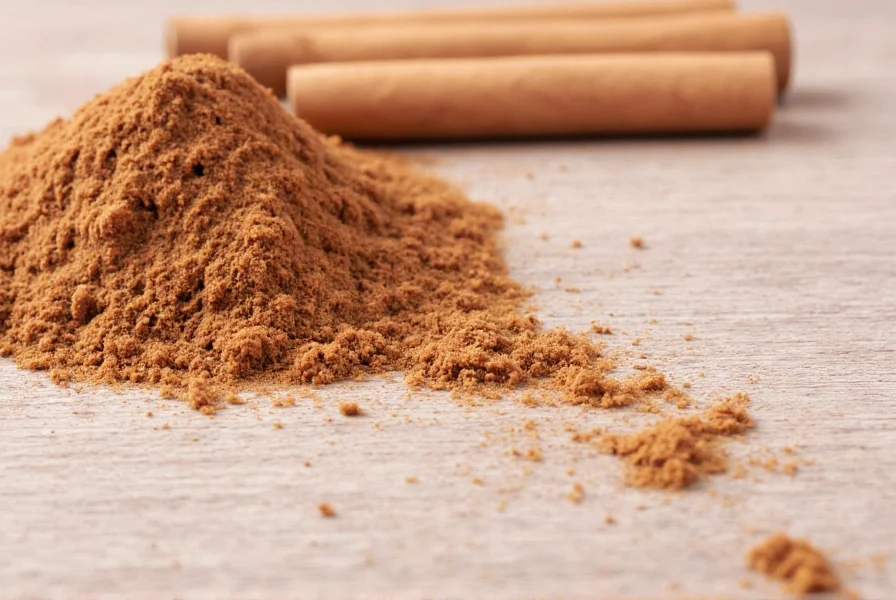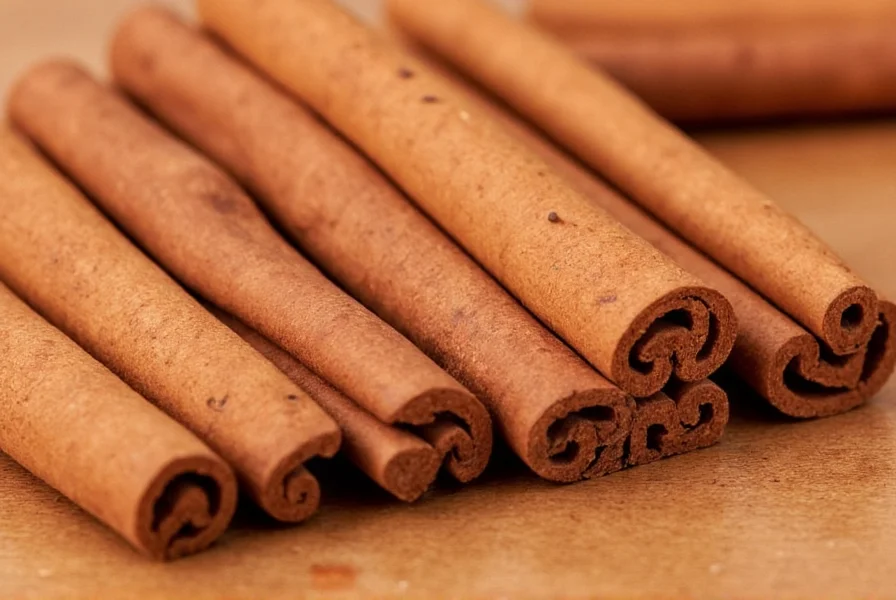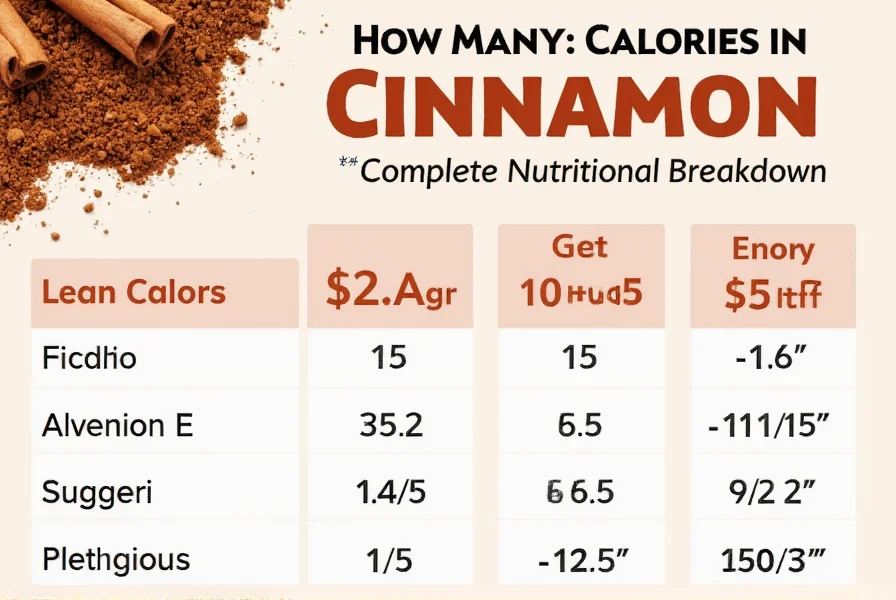When tracking your daily calorie intake, understanding the nutritional profile of common spices like cinnamon is essential. This popular spice adds warmth and sweetness to dishes without significantly impacting your calorie count. Let's explore the detailed nutritional facts and practical implications of cinnamon's caloric content.
Nutritional Profile of Cinnamon Per Serving
Cinnamon's calorie count remains remarkably low even when considering standard usage amounts. The USDA FoodData Central database confirms that a standard teaspoon (2.6g) of ground cinnamon contains:
| Nutrient | Amount per Teaspoon (2.6g) |
|---|---|
| Calories | 6 |
| Total Fat | 0.03g |
| Carbohydrates | 2.1g |
| Dietary Fiber | 1.6g |
| Sugar | 0.1g |
| Protein | 0.1g |
Understanding Cinnamon Serving Sizes
When considering how many calories in ground cinnamon, it's crucial to understand realistic serving sizes. Most recipes call for 1/4 to 1 teaspoon of cinnamon, which translates to just 1.5-6 calories per serving. Even if you use a full tablespoon (approximately 7.8g), you'd consume only about 18 calories.
The naturally sweet flavor of cinnamon means you can often use less than recipe specifications while still achieving desirable taste, further minimizing caloric impact. This makes cinnamon an excellent choice for those monitoring their cinnamon nutritional facts for weight management.

Ceylon vs. Cassia Cinnamon: Caloric Comparison
While most nutritional databases don't differentiate between cinnamon varieties when reporting calories, both Ceylon ("true" cinnamon) and Cassia (the more common variety) have nearly identical caloric content. The primary differences lie in:
- Coumarin content (higher in Cassia, which may affect liver health in large quantities)
- Flavor profile (Ceylon is milder and sweeter)
- Price point (Ceylon is typically more expensive)
From a caloric perspective, calories in one teaspoon of cinnamon remains consistent across varieties at approximately 6 calories, making either type suitable for low-calorie diets when used in typical amounts.
Practical Calorie Impact in Daily Use
Understanding cinnamon nutrition facts per tablespoon helps put the numbers in perspective. Consider these common uses:
- Oatmeal topping (1/2 tsp): 3 calories
- Coffee or tea addition (1/4 tsp): 1.5 calories
- Baked goods per serving (1/2 tsp): 3 calories
- Smoothie addition (1/2 tsp): 3 calories
Even when using cinnamon liberally, its contribution to your daily calorie intake remains minimal. This makes it an excellent tool for enhancing flavor without compromising dietary goals. The question of is cinnamon low calorie receives a definitive yes from nutritional science.
Health Benefits Beyond Calorie Count
While the low-calorie nature of cinnamon makes it attractive for weight management, its benefits extend far beyond just being cinnamon for weight loss calories. Research suggests cinnamon may help with:
- Blood sugar regulation
- Antioxidant properties
- Anti-inflammatory effects
- Heart health support
These potential health benefits come with minimal caloric cost, making cinnamon a valuable addition to a balanced diet. However, it's important to note that while cinnamon can support healthy eating patterns, it shouldn't be viewed as a standalone weight loss solution.

Common Misconceptions About Cinnamon and Calories
Several myths persist about cinnamon's relationship with calories and weight management:
- Myth: Cinnamon significantly boosts metabolism
Fact: While some studies show minor metabolic effects, these are not substantial enough for meaningful weight loss - Myth: Cinnamon can replace sugar without any caloric impact
Fact: While cinnamon adds sweetness perception, it doesn't eliminate the need for sugar in recipes requiring bulk - Myth: All cinnamon products are equally low-calorie
Fact: Cinnamon rolls, candies, and flavored products often contain significant added sugars and fats
When evaluating cinnamon serving size calories in your diet, focus on using the pure spice rather than processed cinnamon-flavored products that may contain hidden calories.
Practical Tips for Using Cinnamon in Calorie-Conscious Diets
Maximize cinnamon's flavor impact while keeping calories minimal with these strategies:
- Combine with zero-calorie sweeteners like stevia for enhanced sweetness perception
- Use in place of higher-calorie flavorings like chocolate or caramel
- Add to plain yogurt instead of flavored varieties with added sugars
- Sprinkle on fresh fruit to enhance natural sweetness
- Mix with unsweetened cocoa powder for a low-calorie hot chocolate alternative
These approaches leverage cinnamon's natural properties to create satisfying flavors without significant caloric cost, addressing the practical concerns behind how many calories in cinnamon queries.











 浙公网安备
33010002000092号
浙公网安备
33010002000092号 浙B2-20120091-4
浙B2-20120091-4